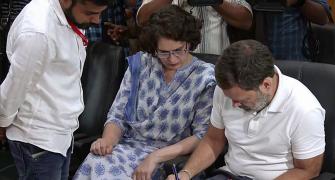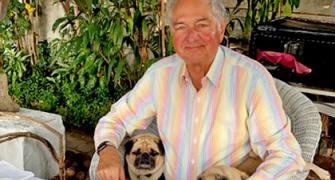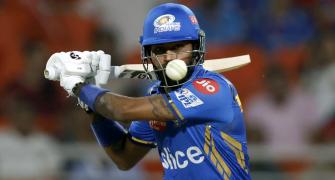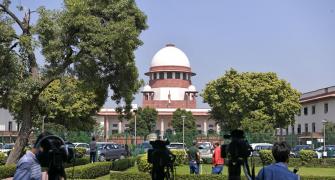Economists who get too close to prime ministers eventually come to grief after their boss is defeated, say T C A Srinivasa-Raghavan
 If you look at the list below, not one of the economists who became a prime ministerial pet has come out with his reputation unscathed. It is an inherent risk.
If you look at the list below, not one of the economists who became a prime ministerial pet has come out with his reputation unscathed. It is an inherent risk.
P C Mahalanobis is derided for his famous model. Sukhamoy Chakravarty has been largely forgotten by everyone. Manmohan Singh is no longer regarded as an economist - even by himself. And Amartya Sen, because of his Nobel, is just about tolerated.
In contrast, the technocrats have done very well for themselves. I G Patel, S Venkitaramanan, Gopi Arora, Montek Singh Ahluwalia, Bimal Jalan et al.
There is perhaps a moral in this story for Jagdish Bhagwati who, a few days ago, was telling a TV interviewer how Narendra Modi was getting his economic policies all mostly right.
It was a robust defence, not so much for what the good professor said about Modi's policies - that is understood - as for the reason he gave as to why he thought so.
This was that he knew Modi's mind, and that it was in the right place - to the extent of even of his being pro-multi brand retail, which his party opposes tooth and nail. He and Modi, he suggested, were on horizontal high-fives terms saying: sathe sathe kahyu (Gujarati for together forever).
Bhagwati has been waiting for a very long time, indeed, for this moment. After all, many of his contemporaries in college got there well before him. They became friend, philosopher and guide to a prime minister. One even ended up becoming prime minister.
It is difficult to say how much Modi actually listens to Bhagwati, but the two certainly seem to be in sync on many things, including a "yes, we can" outlook on the economy. Modi has even appointed a Bhagwati bhakt as chairman of the NITI Aayog.
PMs' pets
Jawaharlal Nehru had Mahalanobis. For a long time, the capital goods investment-led growth path suggested by the latter was known as just the Mahalanobis model. In fact, its correct name was Feldman-Mahalanobis. But after the United Progressive Alliance (UPA) came to power, it somehow became the Nehru-Mahalanobis model.
But never mind that. However much one may criticise it now, the fact remains that for the first time since 1861, India's gross domestic product (GDP) growth crossed 1 per cent during 1960-70.
Then came Indira Gandhi. Ashok Mitra has written that she wooed Chakravarty to be her mentor and he agreed because he was thrilled to do something in the real world. The "Indira-Chakravarty" model stressed the need for re-distribution.
Morarji Desai used to rely a lot on Patel and appointed him as governor of the Reserve Bank of India. But it was a short-lived partnership of just two years from 1977 to 1979.
During her second term (1980-84), Gandhi turned to L K Jha for guidance. He stressed growth. She agreed and India, for the first time, crossed the 5 per cent GDP growth barrier.
Rajiv Gandhi had no time for economists who he thought (perhaps rightly) were a "bunch of jokers". So he had a brace of technocrats, namely, Venkitaramanan, Ahluwalia, Jalan, Arora, et al to tell him which way to go. He was a doer and did quite a lot.
After Rajiv Gandhi came P V Narasimha Rao, who had Manmohan Singh. Singh straddled both worlds, academic and bureaucratic. They made a fine pair. Rao was a politician-intellectual; Singh was an intellectual-politician.
Atal Bihari Vajpayee, like Rajiv Gandhi then and Modi now, was also more interested in getting things done. Economics bored him, just as it had bored Indira Gandhi.
No ideology, please
His eight-year term was a continuation of the post-Rao ideology-mukt phase that started in 1996.
The Left howled that the end was neigh. But Vajpayee, in fact, laid the ground for the fastest growth India had ever expressed. UPA-I reaped the benefit.
When Sonia Gandhi became de facto Prime Minister of India for 10 long years, she acquired Sen as her lamplighter. The result: India's growth went from 9 per cent to less than 5 per cent in four short years. Too much was distributed, too little was invested.
And now, perhaps, we have what history may eventually call the Modi-Bhagwati model. In true Gujju fashion, it relies on spotting business opportunities and investing in those.
No model is required, just an impeccable business sense.
Thank god.
Image: Jagdish Bhagwati. Photograph, courtesy: Facebook








